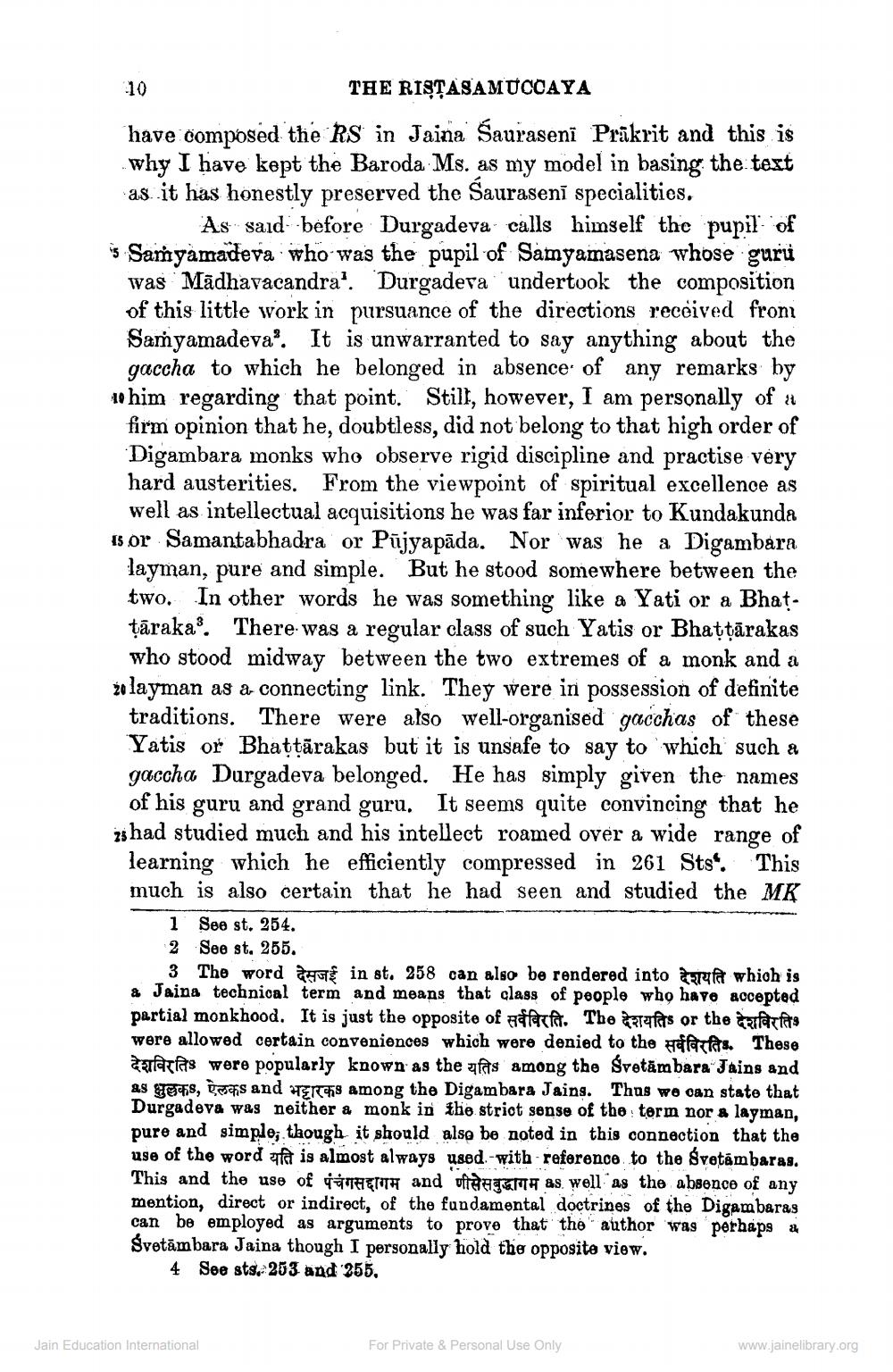________________
10
THE RISTĀSAMUCCAYA have composed the RS in Jaina Sauraseni Prakrit and this is why I have kept the Baroda Ms. as my model in basing the text as it has honestly preserved the Saurasenī specialities.
As said before Durgadeva calls himself thc pupil of is Samyamadeva who was the pupil of Samyamasena whose guru was Madhavacandra'. Durgadera undertook the composition of this little work in pursuance of the directions received froni Samyamadeva'. It is unwarranted to say anything about the
gaccha to which he belonged in absence of any remarks by no him regarding that point. Still, however, I am personally of a firm opinion that he, doubtless, did not belong to that high order of Digambara monks who observe rigid discipline and practise very hard austerities. From the viewpoint of spiritual excellence as well as intellectual acquisitions he was far inferior to Kundakunda 15 or Samantabhadra or Pūjyapāda. Nor was he a Digambara layman, pure and simple. But he stood somewhere between the two. In other words he was something like a Yati or a Bhat. tāraka. There was a regular class of such Yatis or Bhattārakas who stood midway between the two extremes of a monk and a żo layman as a connecting link. They were in possession of definite
traditions. There were also well-organised gaćchas of these Yatis or Bhattārakas but it is unsafe to say to which such a gaccha Durgadeva belonged. He has simply given the names of his guru and grand guru. It seems quite convincing that he zs had studied much and his intellect roamed over a wide range of
learning which he efficiently compressed in 261 Sts. This much is also certain that he had seen and studied the MK
1 See st. 254. 2 See st. 255.
3 The word nie in st. 258 can also be rendered into rafat which is & Jaina technical term and means that class of people who have accepted partial monkhood. It is just the opposite of सर्वविरति. The देशयतिs or the देशविरति were allowed certain conveniences which were denied to the facts. These
farfars were popularly known as the afas among the Svetămbara Jains and as 1848, and are among the Digambara Jaing. Thus we can state that Durgadeva was neither a monk in the strict sense of the term nor a layman, pure and simple, though it should also be noted in this connection that the use of the word of is almost always used with reference to the Svetämbaras. This and the use of FTHETITH and f a t as well as the absence of any mention, direct or indirect, of the fundamental doctrines of the Digambaras can be employed as arguments to prove that the author was perhaps & Svetāmbara Jaina though I personally hold the opposite view.
4 See sts. 253 and 255.
Jain Education International
For Private & Personal Use Only
www.jainelibrary.org




